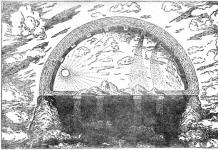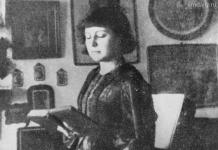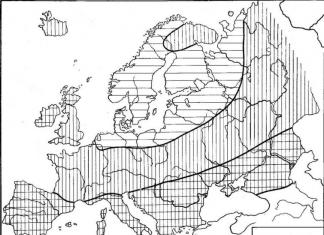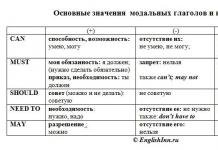1.3 Proportional counter
Proportional counter, a gas-discharge device for recording ionizing radiation, creating a signal whose amplitude is proportional to the energy of the detected particle lost in its volume to ionization.
The disadvantage of the ionization chamber is the very low currents. This disadvantage of the ionization chamber is overcome in ionization detectors with gas amplification, which makes it possible to register particles with energy<10 кэВ, в то время как сигналы от частиц таких энергий в ионизационных камерах «тонут» в шумах усилителя.
The operation of a proportional counter is based on the phenomenon of gas amplification.
Gas amplification is an increase in the number of free charges in the volume of the detector due to the fact that primary electrons on their way to the anode in high electric fields acquire energy sufficient for impact ionization of neutral atoms of the working medium of the detector. The new electrons that arise in this case, in turn, manage to acquire energy sufficient for ionization by impact. Thus, a growing electron avalanche will move towards the anode. This is "self-reinforcement" electron current(gas gain) can reach 103 -104. This mode of operation corresponds proportional counter (chamber). The name reflects the fact that in this device the amplitude of the current pulse (or the total charge collected) remains proportional to the energy spent by the charged particle on the primary ionization of the detector medium. Thus, the proportional counter is capable of performing the functions of a spectrometer, like an ionization chamber. The energy resolution of proportional counters is better than that of scintillation counters, but worse than that of semiconductor counters.
A charged particle, passing through the gas that fills the proportional counter, creates ion-electron pairs along its path, the number of which depends on the energy lost by the particle in the gas. When a particle is completely decelerated in a proportional counter, the momentum is proportional to the energy of the particle. As in the ionization chamber, under the influence electric field electrons move to the anode, ions move to the cathode. In contrast to the ionization chamber, near the anode of the proportional counter, the field is so strong that the electrons acquire energy sufficient for secondary ionization. As a result, instead of each primary electron, an avalanche of electrons comes to the anode and the total number of electrons collected at the anode of the proportional counter is many times greater than the number of primary electrons. Full attitude
the number of collected electrons to the original number is called the gas gain coefficient (ions also participate in the formation of the pulse).
Rice. 14. Counting characteristic of a proportional counter obtained with a combined source of β and α particles.
The ratio of the number of ions n formed as a result of gas amplification to the initial number of ions n0,
formed by a particle is called the gas amplification coefficient M
10 ≤ M ≤ 10000. The M coefficient is selected depending on the particle energy, the type of work (counting or measuring energy) and the optimal signal-to-noise ratio. When measuring energy, they try to take the value M as small as possible, because in this case, the voltage on the meter corresponds to a flatter part of its current-voltage characteristic and too high voltage stability from the power source is not required. When counting particles, high voltage stability is not needed, and high values of M can be used, including the region of limited proportionality.
Gas enhancement occurs at any
electrode geometry, however, cylindrical proportional counters, which are characterized by
low operating voltages, wide application possibilities and compactness.
Rice. 15. Diagram of a proportional counter in longitudinal (a) and transverse (b) sections (the Geiger counter and cylindrical ionization chamber are constructed similarly): 1 - anode filament, 2 -
cylindrical cathode, 3 – insulator, 4 – trajectory of a charged particle, 5 – electron avalanche. Electrons and ions created by the particle as a result of the primary ionization of noble gas atoms are shown as dark and white circles, respectively.

Structurally, a proportional counter is usually made in the form of a cylindrical capacitor with an anode in the form of a thin metal thread along the axis of the cylinder, which provides an electric field strength near the anode that is significantly higher than in the rest of the detector area. With a potential difference between the anode and cathode of 1000 volts, the field strength near the anode filament can reach 40,000 volts/cm, while at the cathode it is equal to hundreds of volts/cm. The diameter of the thread (tungsten or steel) is chosen in the range from 0.05 to 0.3 mm. The surface of the thread is polished, since minor surface roughness greatly distorts the electric field near the collecting electrode.
Rice. 16. Design of a cylindrical proportional counter: 1 – collecting electrode; 2 – security ring; 3 – insulator; 4 – body.
Gas amplification is carried out near the anode at a distance comparable to the diameter of the filament, and the rest of the way the electrons drift under the influence of the field without “reproduction”. The proportional counter is filled with inert gases (the working gas should not absorb drifting electrons) with the addition of a small amount of polyatomic gases that absorb photons generated in avalanches. Gas pressure varies widely - from 50 to 760 mm Hg. Art.
Copper, brass, aluminum and other materials are suitable for the meter body. The minimum wall thickness δ 0.05 mm is limited by the strength of the materials and the condition of the tightness of the working volume. The meter body, filled with gas under low pressure, must withstand external atmospheric pressure.
Rice. 17. Design of a 4π counter for measuring absolute β -
activity: 1 – diaphragm; 2 – source holder; 3 – rubber seal; 4 – collecting electrode.
The absolute β-activity of sources is measured by 4π-counters (Fig. 17), which are paired hemispherical proportional counters. Inside each hemisphere on foil located symmetrically relative to the counters. It emits β particles into a solid angle of 4π. Almost all emitted β -particles are recorded by the counter, and its counting rate is approximately equal to the activity of the source. When determining activity with a 4π counter, corrections are introduced for the absorption of β particles in the foil and the active substance layer. In addition to spherical ones, other forms of 4π counters are also used. The cathodes of 4π counters can be rectangular or semi-cylindrical.
Fig. 18. Circuit diagram for connecting a proportional counter.
Typical characteristics of a proportional meter: gas gain ~ 103 -104 (but can reach 106 or more); pulse amplitude ~ 10-2 V with a proportional counter capacity c. about 20 pf; The development of the avalanche occurs in a time of ~ 10-9 - 10-8 sec, however, the moment the signal appears at the counter output depends on
the location of the passage of the ionizing particle, i.e., from the time of electron drift to the filament. At a radius of ~ 1 cm and a pressure of ~ 1 atm, the delay time of the signal relative to the passage of the particle is ~ 10-6 sec. In terms of energy resolution, a proportional counter is superior to a scintillation counter, but inferior to a semiconductor detector. However, proportional meters allow operation in the energy range< 1 кэВ , где полупроводниковые детекторы неприменимы.
Rice. 19. Block diagram of a proportional counter: 1 –
proportional counter; 2 – high-voltage stabilized voltage source; 3 – broadband linear amplifier; 3a – remote amplifier unit (cathode follower); 4 – amplitude discriminator; 5 – regulating device; 6 – pulse oscilloscope.

If the potential difference between the anode and the cathode is further increased and the gas gain coefficient is increased to values >104, then the proportionality between the energy lost by the particle in the detector and the magnitude of the current pulse begins to break down. The device goes into limited proportionality mode and can no longer be used as a spectrometer, but only as a particle counter. The time resolution of the proportional counter can reach 10-7 s.
The pulse counting rate at constant radiation intensity and system sensitivity depends on the voltage on the electrodes. This dependence is called the counting characteristic. In the voltage section U>U 0, the counting characteristic has a horizontal section (plateau), in which the counting rate is constant. The amplitude of the pulse from all charged particles on the plateau is greater than the sensitivity threshold of the circuit. Therefore, the circuit registers all charged particles entering the proportional counter.
The plateau of proportional counters for α particles begins at low voltages. A sharp exit to a plateau is observed only for a parallel beam of monoenergetic α particles. If α particles move in a gas with unequal energies in different directions, then a smooth approach to a plateau occurs in a higher voltage region. For β-particles, a plateau is achieved either by using highly sensitive circuits or by filling with gas at a pressure greater than 1 atm. This is one of the disadvantages of proportional counters, which makes it difficult to use them for detecting β-particles.
The plateau is inclined to the stress axis at a slight angle. The slope of the plateau (0.1%) is explained by the appearance of false discharges in the gas due to primary ionization from extraneous sources.
A proportional counter operating on the plateau registers all charged particles. In the area below the plateau, not all particles are registered by the counter and its efficiency decreases. Therefore, the most acceptable mode of operation of the proportional counter is in the plateau region, where the efficiency for charged particles is close to 100%.
Proportional counters are used to register all types of ionizing radiation. There are proportional counters for recording α - particles, electrons, nuclear fission fragments, etc., as well as for neutrons, gamma and x-ray quanta. In the latter case, the processes of interaction of neutrons, γ - and X-ray quanta with the gas filling the counter are used, as a result of which secondary charged particles are formed, registered by a proportional counter.
The proportional counter played an important role in nuclear physics in the 30s and 40s. 20th century, being, along with the ionization chamber, practically the only spectrometric detector. The proportional counter was reborn in the physics of high-energy particles in the late 60s. in the form of a proportional chamber consisting of large number(102 -103) proportional counters located in the same plane and in the same gas volume. Such a device allows not only to measure the ionization of a particle in each individual counter, but also to record the location of its passage. Typical parameters of proportional chambers: distance between adjacent anode filaments ~ 1 - 2 mm,
the distance between the anode and cathode planes is ~1 cm; resolution time ~ 10-7 sec.
Rice. 20. Proportional counter circuit: a - electron drift region; b - region of gas enhancement.
The development of microelectronics and the introduction of computers into experimental technology made it possible to create systems consisting of tens of thousands of individual threads connected directly to a computer, which stores and processes all the information from the proportional chamber. Thus, it is both a high-speed spectrometer and a track detector. In the 70s drift appeared
a chamber in which the electron drift that precedes the formation of an avalanche is used to measure the location of a particle's passage. By alternating the anodes and cathodes of individual proportional counters in the same plane, and measuring the electron drift time, it is possible to measure the location of a particle passing through the chamber with high accuracy (~ 0.1 mm) with a number of threads 10 times less than in the proportional chamber. Proportional counters are used not only in nuclear physics, but also in cosmic ray physics, astrophysics, engineering, medicine, geology, archeology, etc. For example, using a proportional counter installed on Lunokhod-1, a chemical elemental analysis of the substance of the lunar surface was carried out using X-ray fluorescence.
The use of gas amplification in proportional counters makes it possible to significantly increase the sensitivity of measurements compared to ionization chambers, and the presence
the proportionality of amplification in counters makes it possible to determine the energy of nuclear particles and study their nature, just as in ionization chambers.
Proportional counters are used to register the number of ionizing particles, determine their energy (pulse mode), as well as to measure radiation fluxes by average current (integral mode), similar to ionization chambers with corresponding operating modes.
Proportional counters are used to register alpha, beta particles, protons, gamma quanta and neutrons. Proportional counters are most often filled with helium or argon. When registering charged particles and gamma quanta, thin entrance windows are used to avoid energy loss by particles before registration. Sometimes the source is placed in the volume of the counter. The detection efficiency for soft gamma rays with energies less than 20 keV is more than 80%. To increase the efficiency of recording more energetic gamma rays, xenon is used.
A necessary condition for registering a charged particle or γ-quantum is the creation of at least one pair of ions in the working volume of the counter. For any ionizing particle, the probability of such an event is close to one. Gamma quanta have a high penetrating power and for them the probability of formation of a secondary electron counter in the gas, and, consequently, the probability of registration, is small fractions of unity.
When a gamma quantum passes through the working volume of the counter, it creates a secondary electron as a result of the photoelectric effect and the effect of pair formation. However, for low-energy gamma quanta, only the photoelectric effect is important (the threshold energy for the pair formation effect is 1.01 MeV). The cross section of the photoelectric effect increases with increasing atomic number of the substance as Z 5 . Therefore, to increase the efficiency of photon registration, it is necessary to fill the counter with a gas with a large Z (krypton or xenon).
Since proportional counters are used mainly for measuring low-energy radiation (on the order of tens of kiloelectronvolts), then certain requirements are applied to the material of the window that transmits radiation into the working volume of the counter. The window material is selected such that the absorption in it for the energy range under study is minimal. A typical proportional counter is a detector with a 70 µm thick beryllium window, filled with a gas mixture of 90% Xe + 10% CH4 to a total pressure P = 0.8 atm. Such a counter has almost 100% efficiency with a γ-quanta energy of 10 keV.
When registering neutrons, proportional counters are filled with gases 3 He or 10 BF3. Reactions used
n + 3 He → 3 H + 1 H + 0.764 MeV
n + 10 B → 7 Li* + 4 He 7 Li + 4He + (0.48 MeV) +2.3 MeV (93%) n + 10 B → 7 Li + 4 He + 2.8 MeV (7%).
The effective cross section of the latter reaction for thermal neutrons is very large.
Neutrons are detected by charged particles resulting from these reactions and causing ionization in the counter. The probability of registering fast neutrons is much less than slow ones, and the efficiency of fast neutron counters does not exceed a fraction of a percent.
Proportional counter
The disadvantage of the ionization chamber is the very low currents. This disadvantage of the ionization chamber is overcome in gas-amplified ionization detectors. This makes it possible to detect particles with energy< 10 кэВ, в то время как сигналы от частиц таких энергий в ионизационных камерах
"тонут" в шумах усилителя.
Gas amplification is an increase in the number of free charges in the volume of the detector due to the fact that primary electrons on their way to the anode in high electric fields acquire energy sufficient for impact ionization of neutral atoms of the working medium of the detector. The new electrons that arise in this case, in turn, manage to acquire energy sufficient for ionization by impact. Thus, a growing electron avalanche will move towards the anode. This “self-amplification” of the electron current (gas amplification coefficient) can reach 10 3 -10 4. This mode of operation corresponds proportional counter (chamber). The name reflects the fact that in this device the amplitude of the current pulse (or the total charge collected) remains proportional to the energy spent by the charged particle on the primary ionization of the detector medium. Thus, the proportional counter is capable of performing the functions of a spectrometer, like an ionization chamber. The energy resolution of proportional counters is better than that of scintillation counters, but worse than that of semiconductor counters.
Structurally, a proportional counter is usually made in the form of a cylindrical capacitor with an anode in the form of a thin metal thread along the axis of the cylinder (Fig. 1), which provides an electric field strength near the anode that is significantly higher than in the rest of the detector area. With a potential difference between the anode and cathode of 1000 volts, the field strength near the anode filament can reach 40,000 volts/cm, while at the cathode it is equal to hundreds of volts/cm.
If the potential difference between the anode and the cathode is further increased and the gas gain coefficient is increased to values >10 4, then the proportionality between the energy lost by the particle in the detector and the magnitude of the current pulse begins to break down. The device goes into limited proportionality mode and can no longer be used as a spectrometer, but only as a particle counter.
The time resolution of the proportional counter can reach 10 -7 s.
Proportional counters are used to register alpha, beta particles, protons, gamma rays and neutrons. Proportional counters are most often filled with helium or argon. When registering charged particles and gamma quanta, thin entrance windows are used to avoid energy loss by particles before registration. Sometimes the source is placed in the volume of the counter. Detection efficiency for soft gamma quanta with energy< 20 кэВ
>80%. To increase the efficiency of recording more energetic gamma rays, xenon is used.
When registering neutrons, proportional counters are filled with 3 He or 10 BF 3 gases. Reactions used
Which is proportional to the energy of the detected particle lost in its volume due to ionization. A charged particle passing through a filling gas. pp., creates ion-electron pairs along its path, the number of which depends on the energy lost by the particle in the gas. When the particle in P. is completely decelerated. momentum is proportional to the energy of the particle. As in the ionization chamber, under the influence of an electric field, electrons move to the anode, ions move to the cathode. In contrast to the ionization chamber near the anode of the P. s. the field is so strong that the electrons acquire energy sufficient for secondary ionization. As a result, instead of each primary electron, an avalanche of electrons arrives at the anode, and the total number of electrons collected at the anode of the PS is many times greater than the number of primary electrons. The ratio of the total number of collected electrons to the initial number is called the gas gain coefficient (ions also participate in the formation of the pulse). In P. s. Usually the cathode is a cylinder, and the anode is a thin (10-100 microns) metal thread stretched along the axis of the cylinder (see figure). Gas amplification is carried out near the anode at a distance comparable to the diameter of the filament, and the rest of the way the electrons drift under the influence of the field without “reproduction”. P.S. filled with inert gases (the working gas should not absorb drifting electrons) with the addition of a small amount of polyatomic gases that absorb photons generated in avalanches. Typical characteristics of P. s.: gas gain coefficient Proportional counter 103-104 (but can reach 106 or more); pulse amplitude Proportional counter 10-2 V with capacitance P. s. about 20 pf; The development of the avalanche occurs within a time period of 10-9-10-8 seconds. However, the moment the signal appears at the output of the P. s. depends on the location of passage of the ionizing particle, i.e. from the electron drift time to the filament. With a radius of the Proportional counter of 1 cm and a pressure of the Proportional counter of 1 atm, the delay time of the signal relative to the passage of the particle of the Proportional counter is 10-6 sec. According to the energy resolution of P. s. superior to a scintillation counter, but inferior to a semiconductor detector. However, P. s. allow you to work in the energy region; it is both a high-speed spectrometer and a track detector. In the 70s a drift chamber appeared, in which the electron drift preceding the formation of an avalanche is used to measure the location of a particle's passage. Alternating the anodes and cathodes of individual P. s. in one plane and by measuring the electron drift time, it is possible to measure the location of the particle passing through the chamber with high accuracy (Proportional counter 0.1 mm) with a number of threads 10 times less than in the proportional chamber. P.S. are used not only in nuclear physics, but also in cosmic ray physics, astrophysics, technology, medicine, geology, archeology, etc. For example, with the help of the P. s. installed on Lunokhod-1. A chemical elemental analysis of the substance of the lunar surface was carried out using x-ray fluorescence. Lit.: Veksler V., Groshev L., Isaev B., Ionization methods for studying radiation, . - L., 1949; Registration principles and methods elementary particles, trans. from English, M., 1963; Kalashnikov. I., Kozodaev M.S., Detectors of elementary particles, M., 1966 (Experimental methods nuclear physics, . 1). V. S. Kaftanov, . V. Strelkov.
Gas ionizing radiation meters are a detector and are designed to register ionizing radiation. A gas discharge is used for amplification. This class of detectors has high sensitivity; therefore, they are capable of detecting individual particles arising in the volume of a gas-filled counter. Depending on the type of gas discharge, I distinguish the following gas meters:
Proportional (based on the phenomenon of non-self-sustaining gas discharge);
Geiger-Muller counters (based on a self-sustaining gas discharge).
Proportional counters
Proportional counters belong to the group of gas-discharge detectors. This name was given to them because the electrical signal at the counter output is proportional in amplitude to the energy lost by the detected particle in the working volume, provided that the particle’s path is completely within it. Using a proportional counter you can measure energy spectra fields of ionizing radiation. Proportional counters are structurally no different from cylindrical ionization chambers, but their gas filling (usually 90% argon and 10% methane) and operating mode are different. A proportional counter, unlike a pulsed ionization chamber, operates at a higher voltage on the electrodes, that is, in that region of the current-voltage characteristic in which conditions arise near the surface of a thin anode electrode for the onset of secondary impact ionization (Secondary impact ionization is a process in which electrons , formed as a result of primary ionization, are themselves capable of producing ionization due to sufficient kinetic energy). The meter is often designed in coaxial cylindrical geometry. The anode is made in the form of a thin metal thread (0.1 mm), stretched strictly along the axis of the cylindrical body. The volume of the meter is filled with inert gas with the addition of polyatomic gases. The gas pressure is selected close to atmospheric or slightly higher. A positive voltage U 0 of several hundred V relative to the cathode is applied to the anode. A non-uniform electric field appears in the volume of the counter, the strength of which changes as it approaches the anode according to the law 1/r, where r is the current value of the radius in the volume of the counter. Changing the field strength causes the electrons to accelerate towards the anode. Near the anode surface, electrons are accelerated to such energies that they acquire the ability to produce secondary impact ionization of the working gas. The process of ion multiplication during secondary ionization is limited to several generations, but does not develop into an uncontrollable avalanche. The discharge stops as soon as primary ionization stops. A gas discharge of this type is called non-self-sustaining, that is, capable of stopping without additional influence on it. Let's consider a graph of the dependence of the pulse magnitude on the voltage on the gas detector (Fig. 1).
1 – Ionization chamber area. At low voltages, the proportional counter works like an ionization chamber; the current does not depend on the voltage, but will be determined by the number of ions that are formed in the gas volume. Then, as the voltage increases, the pulse will increase due to the phenomenon of impact ionization;
2 – Proportional area. The proportional counter operates in such a way that the amplitude of the pulses is proportional to the ionization, taking into account gas amplification;
3 – Region of limited proportionality. The region to which, with a further increase in voltage, the gas gain* increases in absolute value and depends on the initial ionization.
4 – Geiger region. In this region, each secondary electron will cause a discharge in the gas, i.e. in this region the magnitude of the impulse no longer depends on the initial ionization. Works like a Geiger-Muller counter.
With a further increase in voltage in the gas, an increase in discharge will be observed that is not associated with ionization - a spontaneous discharge. In this case, the meter cannot be used, since a breakdown occurs in the gas.
Gas Gain Factor
If the number of ion pairs created by a detected particle flying into the working body of the counter is equal to n, then the number of ion pairs created by secondary impact ionization will be equal to K ⋅ n. The value of K is called the gas gain coefficient. You can determine the gas gain coefficient through the number of ion pairs present in the counter volume during signal formation: K = n/n 0, where n 0 is the number of ion pairs created by the ionizing particle; n – total number ion pairs.
Detection efficiency
Detection efficiency is the ratio, expressed as a percentage, of the number of detected particles to the number of all particles entering the working volume of the detector. Depends on the material of the detector walls, their thickness and radiation energy.
Application of proportional counters
The scope of application of proportional counters is quite extensive, which is determined by their properties. The efficiency of their detection of alpha particles, fission fragments, protons, and soft gamma and x-ray radiation(with energy up to 10–20 keV) is close to 100%. For such measurements (especially for measurements of charged particles), sensors with windows made of thin mica or organic films are used. Sometimes the radiation source is placed inside the volume. Proportional counters are actively used to examine surfaces for contamination, including systems for monitoring contamination of the surface of the body, clothing, shoes, and so on. To register neutrons, proportional counters are filled with 3 He or 10 BF 3 .
The use of proportional counters for spectrometry is limited. In most cases, systems based on them are inferior to semiconductor and scintillation ones. However, reliability and simplicity make it possible to use them, if high-energy resolution is not required, for work in the energy region of ~0.2 keV, where a semiconductor detector is not applicable. Compared to a scintillation detector, proportional counters have better energy resolution, lower noise, and are insensitive to magnetic fields.
PROPORTIONAL COUNTER- gas discharge detector particles that create a signal, the amplitude of which is proportional to the energy released in its volume by the detected particle. With complete deceleration of the particle in the volume of the P. s. the amplitude of the signal is proportional to the energy of the particle, i.e. P.s. is both and . P.s., like other gas-discharge detectors, is a gas volume (from several cm 3 to several liters) with 2 electrodes. From design ionization chamber P.S. distinguished by the shape of the anode in the form of a thin thread or tip to ensure a significantly higher electrical voltage near the anode. fields than in the rest of the space between the anode and cathode. Naib. Cylindrical are common. PS, where the cathode is metal.

a cylinder (meter body), inside of which a thin wire is stretched axially - the anode (Fig. 1).
Rice. 1. Scheme of a proportional counter: And - source of particles. Charge a particle with energy creates in a gas 0 P=/W
-
electron-ion pairs, whereionization onal losses particle energy, W
- Wed energy of formation of an electron-ion pair. The current (voltage) pulse arising at the resistance L, proportional to the pulse (1-100 mV), is amplified and sent to a recording (analyzing or storage) electronic device. Gas boost. Primary electrons formed by charge. particle as a result of gas, under the influence of electricity. the fields move towards the anode, repeatedly colliding with atoms along the way (Fig. 2). These collisions are partially inelastic, since they lose electrons. part of their energy and cannot gain energy sufficient to ionize gas atoms (20-30 eV). In cylindrical P.S. electric field E~, where is the distance of the particle to the thread (Fig. 3). Therefore, there is consistency between the two. collisions, electrons approaching the anode receive ever-increasing kinetic values. energy, and at a certain distance from the filament the energy becomes sufficient for ionization. The resulting secondary electrons, together with the primary ones, participate in the subsequent avalanche ionization of the gas (gas amplification). Coef. gas boost M< - the ratio of the number of electrons arriving on the filament to the number of primary electrons. The shape of the electron-ion avalanche near the anode strongly depends on the value<
M:<at 10<10
M E~ 100 the avalanche takes the form of a drop in the direction of the arrival of electrons at the anode; at 10 2 Charge a particle with energy creates in a gas M E~ 4 the avalanche becomes heart-shaped, elongated in the direction of the arrival of electrons; at

>10 4 the avalanche completely covers the anode - then the proportionality between

0 and signal amplitude. The size of the avalanche along the wire anode increases with increasing from fractions of mm to several. mm. electrons from the cathode surface, therefore, the torn out (with a probability of ~10 -4) photoelectrons also move to the anode, complicating the discharge picture and forming an avalanche series - a sequentially damped chain of pulses spaced from each other for the duration of the electrons drift from the cathode to the anode. Photoelectron emission can be weakened if, in addition to inert ones (Ar, Kr, Xe), polyatomic gases (CH 2, C 2 H 2, CO 2, etc.) that absorb UV radiation are introduced into the gas composition. Since electrons absorb gases and vapors with electron affinity (O 2, H 2 O, halogens), then in a mixture of P. s. should be min.
quantity (O 2 concentration ~10 -5 cm 3). If we neglect the influence of the spatial factor on the avalanche. ions, sticking

electrons and photoelectron emission, then where is the ionization number. electron collisions on a path of 1 cm (first Townsend coefficient), depends on the field strength E , pressure r and type of gas. In the Rose-Korff approximation, where a =N K (K , pressure r and type of gas. In the Rose-Korff approximation, where a =- gas characteristics,
- gas, - electron energy), Here![]() C=
C=
- meter capacity per unit length, - voltage on the electrodes, - voltage corresponding to the beginning of the avalanche. At (Fig. 4). Due to statistical nature of the avalanche process Vc (Fig. 4). Due to statistical nature of the avalanche process is not a clear characteristic of P. s., therefore E~ determined by the intersection of the straight section of the lnM(F 0) dependence with the abscissa axis. The linear relationship continues until

~ 10 4 . With a further increase in F 0, the dependence ceases to be linear (mainly due to the influence of photoelectron emission and the space charge of ions). Region M~ E~ 10 4 -10 6 called. area of limited proportionality. Large can lead to breakdown (Fig. 5). To prevent breakdown, quenching impurities are used - organic. gases (CH 4, propane, isobutane, C 2 H 5 OH, methylal, etc.), which have a large cross section for photoabsorption, dissociation and transfer of excitation to a complex molecule. Organic additive gas stabilizes the gas amplification process over a wide range E~ V 0
, although the voltage itself required for the required, increases.

Signal Conditioning<10 -9 с,
однако вследствие того, что электроны в лавине проходят сравнительно малые расстояния
(большинство электронов рождаются только на последних стадиях лавины), вклад
электронной компоненты в полную амплитуду импульса 10%.
Положит. ионы, большинство к-рых расположено от поверхности нити на расстоянии
ср. пробега электронов в лавине (15
мкм), после окончания лавины начинают двигаться к катоду, индуцируя изменение
потенциала на нём во времени . The contribution to the pulse amplitude due to the movement of primary ions and electrons is small.:
- gas, - electron energy), Avalanche development time t e- electron charge, - ion mobility (see. Mobility electrons and ions), n 0 the moment of arrival will put an end to everything. ions to the cathode after (15)·10 -3 s from the moment of formation of the avalanche (Fig. 6). The pulse reaches half the value from its maximum in (15) 10 -6 s, therefore, to obtain high time resolution, the input circuits of the amplifier are differentiating chains (= RC) or delay lines.T. Thus, in the case of a particle (track) trajectory parallel to the anode, it is possible to obtain pulses with a duration<
10 -7 с. При произвольной ориентации трека ширина импульса определяется
разностью во временах дрейфа первичных электронов
от начала (A) and end ( IN) track to the anode (Fig. 2). These times can reach 0.1-10 µs. The pulse delay time at the output of the PS is of the same order. from the moment of primary ionization, which limits the possibilities of using P. s. V matches method.
Rice. 6. Temporal development of the signal at different .

Energy resolution. Statistical fluctuations in the number of primary ions n 0, as well as fluctuations E~"blur" the amplitude of the pulses and determine the maximum achievable energy. permission P. s. (these components are approximately equal in size to each other). Energy resolution is approximately expressed by the relation
An increase in the spread of pulse amplitude can be caused by design imperfections, leading to distortion of the electrical distribution. fields at the anode, and max. What is important is consistency in the length of the P. s., for example. 1 µm can cause amplitude spread of ~50%. Great influence on energy. resolution is determined by the stability of V 0 (0.05%) and gas purity. For inert gases, CO 2, CH 4, etc., electron attachment is not observed, but the presence is even insignificant. quantity (<0,1%)
электроотрицат. молекул Н 2 О, СО, О 2 , С 2 и т.
д. приводит к значит. ухудшению энергетич. разрешения, т. к. амплитуда импульса
становится зависимой от места образования первичных электронов. Добавки нек-рых
газов с потенциалом ионизации, меньшим потенциала ионизации осн. газа, могут
приводить к уменьшению ср. энергии, затраченной на образование пары ионов, следовательно
к улучшению разрешения.
Timing characteristics. Max. speed of registration P. s. depends on the pressure and composition of the gas mixture and the thickness of the anode wire. E~ At high registration rates, the electron avalanche formed in the unrelaxed space charge from the previous avalanche is weakened.
This attenuation is distributed according to a random law and causes not only a decrease in the amplitude of the pulses, but also degrades the energy. permission. At. Efficiency of P. s. to a-particles, fragments, protons, electrons and soft g-quanta is close to 100%. To register these particles in P.s. "windows" made of thin mica or organic are provided. films Sometimes the radiation source is placed inside the volume of the P. s. For registration and with energies up to 1 MeV, photovoltaics are used. high pressure (up to r = 150 atm) in mag.).
field. The measurement of g-quanta energy is associated with the filling gas. For up to 1020 keV, the efficiency of P. s. 80%, and for larger ones Xe is required (Fig. 7; see Gamma radiation
P.S. used to measure small beats. activities. From Geiger counter it is distinguished by its ability to release monoenergetic energy. lines from dep. radionuclides against the background of a continuously distributed background in a wide energy range. range from 1 to 10 3 keV.
As a spectrometer P. s. inferior semiconductor detectors, however, reliability and simplicity make it possible to use it if high-energy is not required. permission. P.S. allows you to work in the energy region of ~0.2 keV, where a semiconductor detector is not applicable. Compared to scintillation detector P.S. has the best energy. resolution, less noise, insensitive to magnetic fields. field. P.S. operates in the temperature range ~10-10 3 K. P.S. used in studying beta decay nuclei (mass estimates), study of the fine structure-spectrum, isomeric states of nuclei (see. Nuclear isomerism ), upon detection of capture by the nucleus L -electron (see Rice-Evans P., Spark, streamer, proportional and drift chambers, L., 1974; Sau1i F., Principles of operation of multiwire proportional and drift chambers, Gen., 1977; 3anevsky Yu. V., Wire detectors of elementary particles, M., 1978; Sanada J., Growth of the avalanche about the anode wire in a gas counter, "Nucl. Instr. and Meth.", 1982, v. 196, p. 23; Sau1i F., Basic processes in time-projection like detectors, in the book: Time projection chamber 1st workshop., Vancouver, 1983, N. Y., 1984; Ionization intentions in high energies, M., 1988..


























